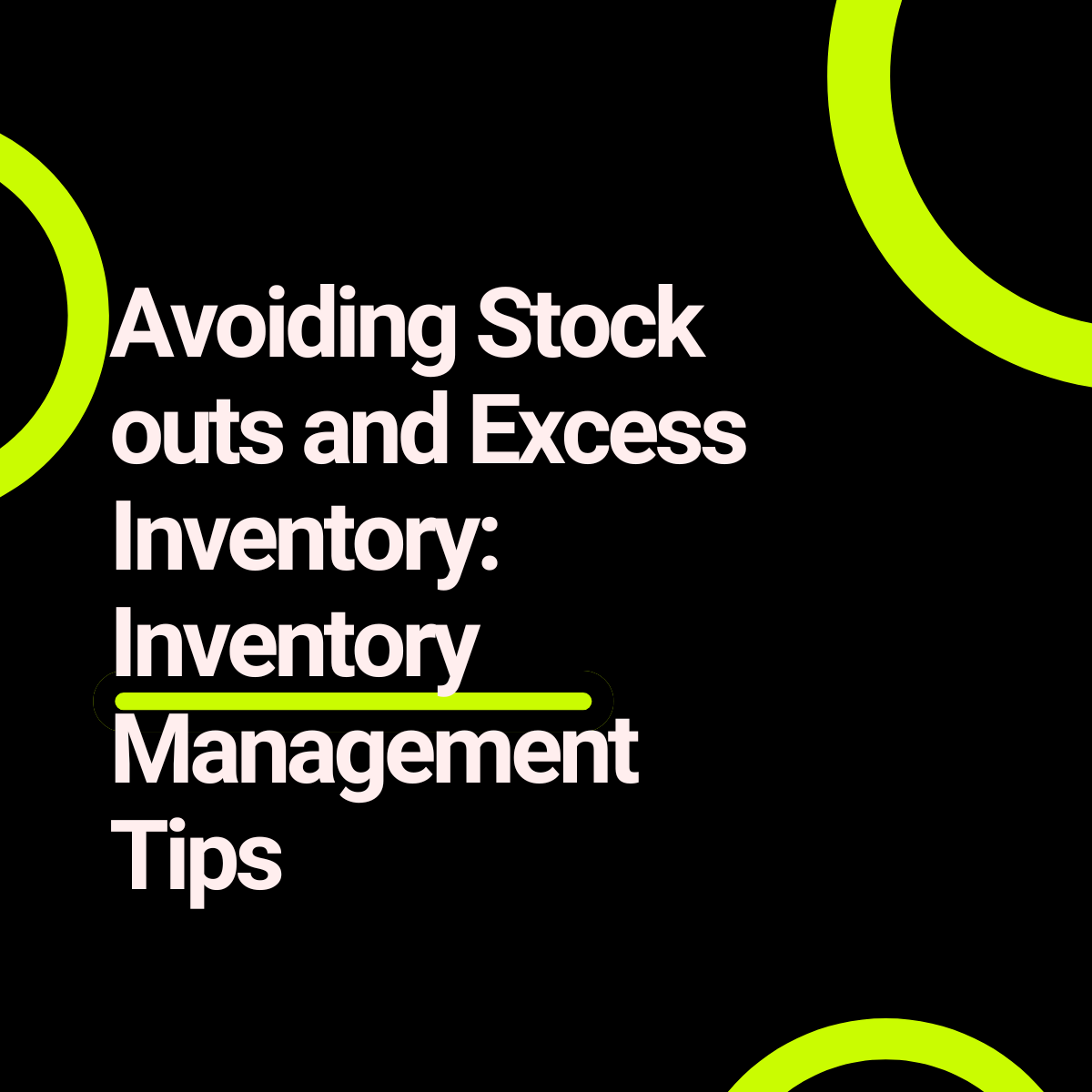Effective inventory management is crucial for maintaining operational efficiency and ensuring customer satisfaction. Stock outs and excess inventory can both have detrimental effects on a company’s bottom line, leading to lost sales, increased holding costs, and damaged reputation.
I. Introduction to Inventory Management
Understanding Stockouts and Excess Inventory
Inventory management involves the careful balance of maintaining sufficient stock levels to meet customer demand while avoiding overstocking or stockouts. Let’s define these terms:
- Stockouts: Occur when a company runs out of a particular product, leading to unfulfilled customer orders and lost sales opportunities.
- Excess Inventory: Refers to inventory levels that exceed demand, resulting in increased holding costs, obsolescence, and potential markdowns.
II. Strategies for Avoiding Stockouts
A. Demand Forecasting and Planning
Accurate Forecasting Techniques
- Historical Data Analysis: Utilize past sales data to predict future demand trends.
- Market Research: Stay informed about market conditions, competitor activities, and consumer preferences.
- Seasonal Adjustments: Factor in seasonal variations and trends when forecasting demand.
B. Safety Stock Management
Implementing Safety Stock Policies
- Calculation Methods: Determine safety stock levels based on factors such as lead time variability, demand variability, and service level objectives.
- Buffer Inventory: Maintain a buffer of safety stock to mitigate the risk of stockouts during unexpected demand spikes or supply chain disruptions.
C. Just-in-Time (JIT) Inventory Management
Key Principles of JIT Inventory
- Lean Inventory: Minimize inventory levels by ordering only what is needed, when it is needed.
- Supplier Collaboration: Foster strong relationships with suppliers to facilitate timely deliveries and reduce lead times.
- Continuous Improvement: Implement ongoing process improvements to eliminate waste and optimize efficiency.
III. Strategies for Avoiding Excess Inventory
A. Demand Forecasting and Inventory Optimization
Dynamic Demand Forecasting
- Demand Sensing: Utilize real-time data and analytics to identify demand patterns and adjust inventory levels accordingly.
- Inventory Optimization Tools: Implement advanced algorithms and software solutions to optimize inventory levels based on demand variability and service level targets.
B. Vendor Management and Supplier Collaboration
Effective Supplier Relationships
- Supplier Performance Evaluation: Regularly assess supplier performance based on factors such as lead times, quality, and reliability.
- Collaborative Planning: Work closely with suppliers to align production schedules and inventory levels with demand forecasts.
C. Inventory Turnover Analysis
Monitoring Inventory Turnover Ratios
- Calculation Methods: Calculate inventory turnover ratios to measure how efficiently inventory is being managed and identify areas for improvement.
- Benchmarking: Compare inventory turnover ratios against industry benchmarks to gauge performance and identify outliers.
IV. Implementing Inventory Management Technologies
A. Inventory Management Systems (IMS)
Features and Benefits
- Inventory Tracking: Monitor inventory levels in real-time and track stock movements across locations.
- Forecasting and Planning: Utilize built-in forecasting tools to predict future demand and optimize inventory levels.
- Integration Capabilities: Seamlessly integrate with other business systems such as ERP and CRM for streamlined operations.
B. RFID Technology
Advantages of RFID in Inventory Management
- Accuracy: Improve inventory accuracy and reduce errors associated with manual data entry.
- Visibility: Gain real-time visibility into inventory levels and locations throughout the supply chain.
- Efficiency: Streamline inventory tracking and cycle counting processes, saving time and labor costs.
V. Conclusion
In conclusion, effective inventory management is essential for businesses to maintain a competitive edge and meet customer expectations. By implementing the strategies outlined in this guide, companies can mitigate the risks of stockouts and excess inventory, optimize their inventory levels, and improve overall operational efficiency. With careful planning, robust forecasting, and the adoption of advanced technologies, businesses can avoid the pitfalls of poor inventory management and thrive in today’s dynamic marketplace.

